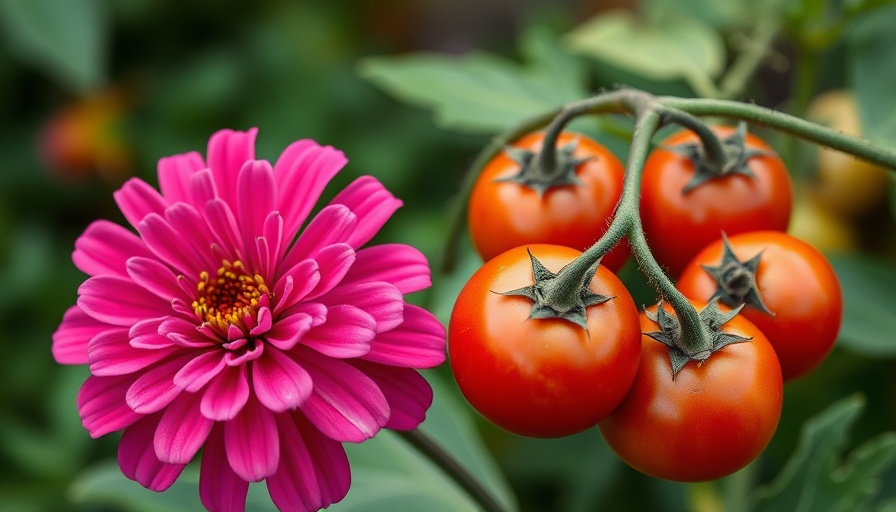
Discover the Power of Companion Planting for Tomatoes
Companion planting is a time-honored gardening technique that not only enhances the yield of your tomato plants but also creates a vibrant ecosystem in your garden. By pairing tomatoes with suitable companions, you can significantly impact their growth and health while keeping pesky pests at bay. This article delves into the essentials of companion planting specifically tailored for tomato cultivation, offering insights that every gardener should consider.
Understanding Companion Gardening
What exactly is companion gardening? It’s about strategically positioning diverse plant species together to create mutually beneficial relationships. For instance, the University of California’s research highlights that such partnerships lead to improved plant health, increased yields, and natural pest resistance. By carefully choosing which plants to cultivate alongside tomatoes, you can bolster their growth, prevent diseases, and even enhance their culinary flavors.
The Benefits of Companion Planting
Is it any surprise that companion plantings have numerous advantages? Below are some of the most significant benefits:
- Pest Control: Certain plants serve as natural repellents. For example, marigolds are known for deterring nematodes and aphids, while herbs like basil ward off mosquitoes and flies.
- Improved Pollination: Flowers such as lavender and sunflowers are excellent for attracting pollinators like bees and butterflies, which significantly enhance fruit and vegetable yields.
- Weed Suppression: Planting ground-covering crops helps to block sunlight from reaching weeds, thereby reducing their growth.
- Soil Health Improvement: Including legumes such as peas and beans can enrich the soil by fixing nitrogen, which is essential for tomatoes.
- Efficient Space Utilization: Mixing plants with varying growth habits—like tall corn with climbing beans—maximizes your garden space while minimizing undesirable weeds.
Top Herb Choices for Tomato Companions
The herbs you choose can make a world of difference in your tomato garden. Not only do they help to improve flavors, but they also protect your tomatoes from pests. Noteworthy herbs include:
- Basil: A classic choice that not only enhances the taste of tomatoes but also repels harmful insects.
- Oregano: This aromatic herb thrives alongside tomatoes and adds a flavorful punch to your dishes.
- Parsley: Another beneficial herb that supports tomato growth by attracting beneficial insects.
Enhancing Your Tomato Harvest Through Flowers
While herbs are essential, don’t overlook the power of flowers in your tomato garden. Varieties like marigolds and nasturtiums can attract pollinators and deter pests effectively. They add beauty to your garden while promoting a healthier ecosystem. Additionally, features like their vibrant colors can make your garden aesthetically pleasing, which should not be underestimated. Just think of how much joy a well-kept garden can bring!
Future Trends: Sustainability in Urban Gardening
As urban gardening continues to rise, the need for sustainable practices, such as companion planting, becomes increasingly significant. With limited space, cities require innovative approaches to maximize yields. Companion planting optimizes space usage and minimizes reliance on pesticides, leading to healthier produce and a more sustainable gardening practice that can thrive even in confined environments.
Take Action for Your Gardening Success
Now that you grasp the advantages and techniques of companion planting for tomatoes, it's time to put this knowledge into action. Experiment with different combinations to discover which pairings yield the best results for your gardening style. By embracing these strategies, you'll not only enjoy a fruitful tomato harvest but also cultivate a thriving garden that biodiversity and sustainability can help flourish!
For more in-depth insights on gardening practices that elevate your landscape, be sure to seek professional advice or explore guides that align with your gardening goals. Dive into the world of companion planting and transform your home garden into a flourishing paradise.
 Add Row
Add Row  Add
Add 




Write A Comment